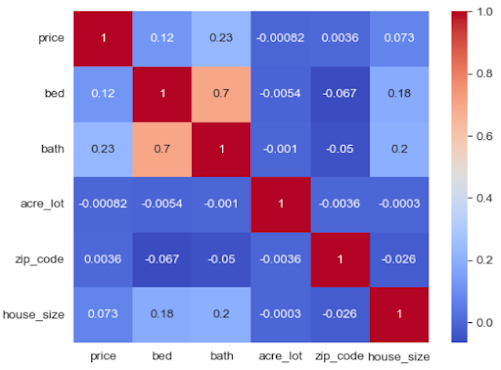Cyclistic Share Bike Capstone R Project
How Does
a Bike-Share Navigate Speedy Success?
Ask Questions:
1.
How do annual members and casual riders use
Cyclistic bikes differently?
2.
Why would casual riders buy Cyclistic annual
memberships?
3.
How can Cyclistic use digital media to influence
casual riders to become members?
As a junior data analyst, I have been assigned to answer the
first question: How do annual members and casual riders use Cyclistic bikes
differently?
Key stakeholders:
1.
Lily Moreno: The director of marketing
and my manager.
2.
Cyclistic executive team: The notoriously
detail-oriented executive team will decide whether to approve the recommended
marketing program.
Prepare:
1. Download the previous 12 months of Cyclistic trip data from the website called “divvy-tripdata”. The datasets are appropriate and organized. These data are reliable, original, comprehensive, current and cited. The data has been made available by motivate international Inc. under this license. By analyzing these data, I would be to find the connection between casual and member riders to identify the trends.
2.
Sorting and filtering the data: There are some
NULL cells in the tables and needs to be marked as N/A which will not be used in
the data analysis. Also, I removed the
blank cells by using filtering.
R-Studio:
# Install all the packages install.packages("tidyverse") install.packages("lubridate") install.packages("skimr") library(tidyverse) library(lubridate) library(ggplot2) library(dplyr) library(skimr)
Sep21 <- read.csv("202109-divvy-tripdata.csv") Oct21 <- read.csv("202110-divvy-tripdata.csv") Nov21 <- read.csv("202111-divvy-tripdata.csv") Dec21 <- read.csv("202112-divvy-tripdata.csv") Jan22 <- read.csv("202201-divvy-tripdata.csv") Feb22 <- read.csv("202202-divvy-tripdata.csv") Mar22 <- read.csv("202203-divvy-tripdata.csv") Apr22 <- read.csv("202204-divvy-tripdata.csv") May22 <- read.csv("202205-divvy-tripdata.csv") Jun22 <- read.csv("202206-divvy-tripdata.csv") Jul22 <- read.csv("202207-divvy-tripdata.csv") Aug22 <- read.csv("202208-divvy-tripdata.csv")
# Combine all files into one file called "totaltripdata" totaltripdata <- rbind(Sep21,Oct21,Nov21,Dec21,Jan22,Feb22,Mar22,Apr22,May22,Jun22,Jul22,Aug22)nrow(totaltripdata) # number of rows [1] 5883043 ncol(totaltripdata) # number of columns [1] 13 head(totaltripdata) # check the first 6 rows of the data frametail(totaltripdata) # check the last 6 rows of the data framesummary(totaltripdata) # statistical summary of the datacolnames(totaltripdata) # list of column names [1] "ride_id" "rideable_type" "started_at" "ended_at" "start_station_name" [6] "start_station_id" "end_station_name" "end_station_id" "start_lat" "start_lng" [11] "end_lat" "end_lng" "member_casual"# Aggregate the totaltripdata_2aggregate(totaltripdata_2$ride_length ~ totaltripdata_2$member_casual, FUN = mean) totaltripdata_2$member_casual totaltripdata_2$ride_length 1 casual 1758.0228 2 member 771.3398 aggregate(totaltripdata_2$ride_length ~ totaltripdata_2$member_casual, FUN = median) totaltripdata_2$member_casual totaltripdata_2$ride_length 1 casual 835 2 member 538 aggregate(totaltripdata_2$ride_length ~ totaltripdata_2$member_casual, FUN = max) totaltripdata_2$member_casual totaltripdata_2$ride_length 1 casual 2442301 2 member 89998 aggregate(totaltripdata_2$ride_length ~ totaltripdata_2$member_casual, FUN = min) totaltripdata_2$member_casual totaltripdata_2$ride_length 1 casual 0 2 member 0# Order the days of the week, set Sunday as the first day of the weektotaltripdata_2$day_of_week <- ordered(totaltripdata_2$day_of_week, levels=c("Sunday","Monday","Tuesday","Wednesday","Thursday","Friday","Saturday"))
# Plot the average duration of rides vs. day of week totaltripdata_2 %>% mutate(weekday = wday(started_at, label = TRUE)) %>% group_by(member_casual, weekday) %>% summarise(number_of_rides = n(), average_duration = mean(ride_length)) %>% arrange(member_casual, weekday) %>% ggplot(aes(x = weekday, y = average_duration, fill = member_casual)) + geom_col(position = 'dodge')
# Export the analyzed file into the work drivewrite.csv(totaltripdata_2, "data.csv")
Power BI Dashboard:
Conclusion:
1. During weekdays, member riders tend to ride bikes more often than casual riders because they are mainly using bikes for the home-work commutes. Casual riders ride bikes more than member riders during weekends because they have more available time to ride for leisure.
2. Casual riders ride bikes much longer than casual riders because they have a relatively steady start point and destination point (e.g. home and workplace).




































